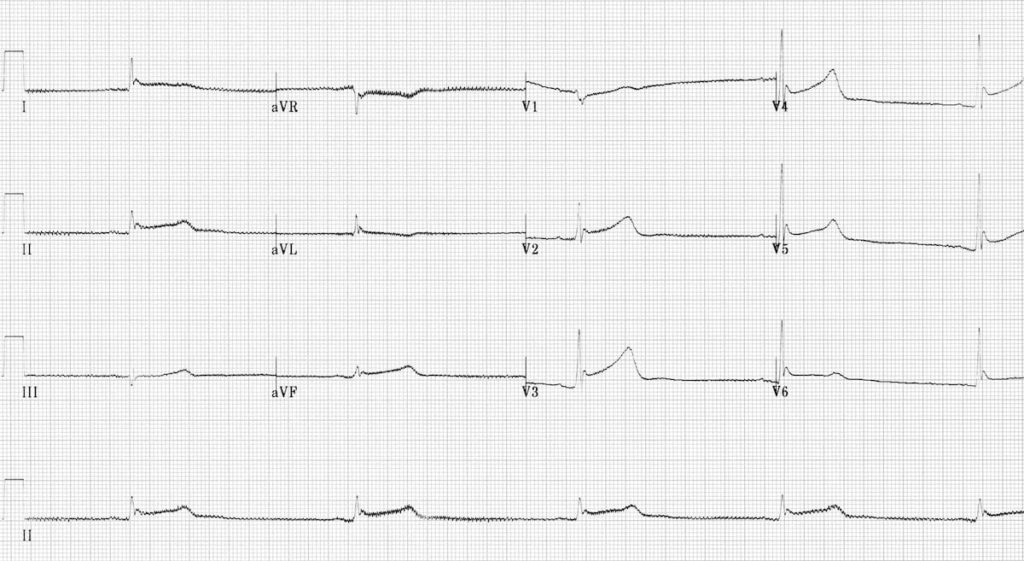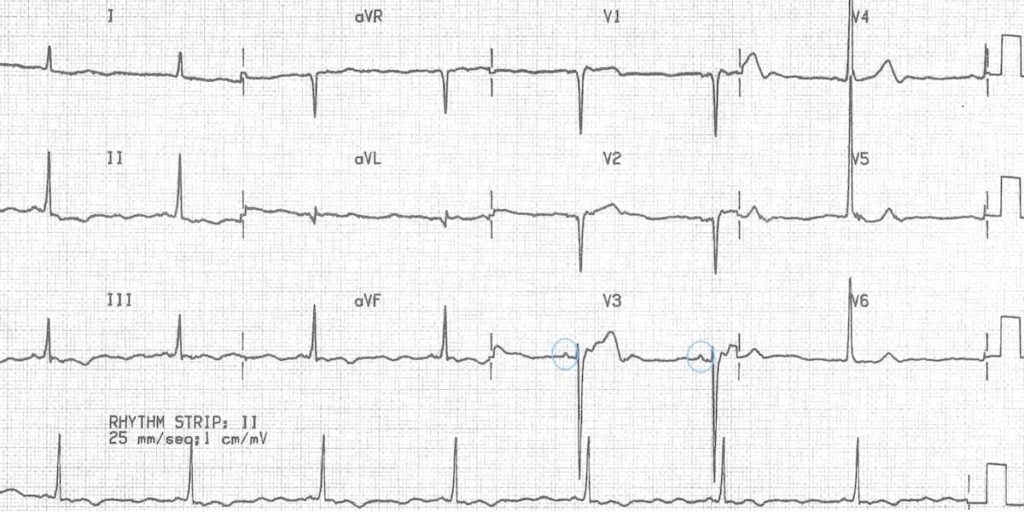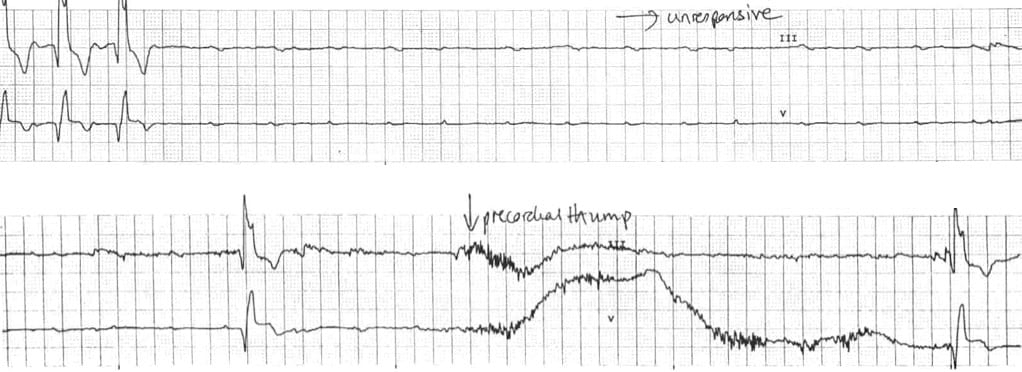ECG Motion Artefacts
ECG Motion Artefacts Overview
- Motion artefact due to tremor or shivering can obscure the waveforms of the ECG or simulate pathology, making ECG interpretation difficult
- In certain circumstances (e.g. hypothermia), the presence of shivering artefact may actually aid diagnosis
Causes of Tremor
- Benign Essential Tremor (physiological tremor)
- Parkinson’s Disease (resting tremor)
- Cerebellar disease (intention tremor)
- Alcohol / Benzodiazepine withdrawal
- Anxiety
- Thyrotoxicosis
- Multiple sclerosis
- Drugs: Amphetamines, cocaine, beta-agonists (adrenaline, salbutamol), theophylline, caffeine, lithium.
Other types of motion artefact
- Fever (rigors)
- Hypothermia (shivering)
- Cardiopulmonary resuscitation (chest compressions)
- A non-compliant, mobile, talkative patient (= the most common cause)!
ECG Examples
Example 1

Hypothermia:
- This ECG displays the classic features of hypothermia: bradycardia, Osborn waves and shivering artefact
Example 2

Parkinsonian tremor:
- The irregular baseline in this ECG gives the appearance of atrial fibrillation
- The slow regular rhythm even suggests the possibility of atrial fibrillation with complete heart block and a junctional escape rhythm
- However, on closer inspection there are visible P waves in V3 (circled)
- This patient had sinus bradycardia and a resting tremor due to Parkinson’s disease
Example 3

Chest compressions during CPR:
- The high amplitude oscillations at the start of the rhythm strip are produced by movement artefact due to chest compressions during cardiopulmonary resuscitation
- The second half of the rhythm strip shows ventricular fibrillation – presumably at this point the resuscitating team have stopped CPR to reassess the rhythm!
Example 4

Precordial thump:
- This ECG demonstrates the movement artefact produced by a precordial thump!
Advanced Reading
Online
- Wiesbauer F, Kühn P. ECG Mastery: Yellow Belt online course. Understand ECG basics. Medmastery
- Wiesbauer F, Kühn P. ECG Mastery: Blue Belt online course: Become an ECG expert. Medmastery
- Kühn P, Houghton A. ECG Mastery: Black Belt Workshop. Advanced ECG interpretation. Medmastery
- Rawshani A. Clinical ECG Interpretation ECG Waves
- Smith SW. Dr Smith’s ECG blog.
- Wiesbauer F. Little Black Book of ECG Secrets. Medmastery PDF
Textbooks
- Zimmerman FH. ECG Core Curriculum. 2023
- Mattu A, Berberian J, Brady WJ. Emergency ECGs: Case-Based Review and Interpretations, 2022
- Straus DG, Schocken DD. Marriott’s Practical Electrocardiography 13e, 2021
- Brady WJ, Lipinski MJ et al. Electrocardiogram in Clinical Medicine. 1e, 2020
- Mattu A, Tabas JA, Brady WJ. Electrocardiography in Emergency, Acute, and Critical Care. 2e, 2019
- Hampton J, Adlam D. The ECG Made Practical 7e, 2019
- Kühn P, Lang C, Wiesbauer F. ECG Mastery: The Simplest Way to Learn the ECG. 2015
- Grauer K. ECG Pocket Brain (Expanded) 6e, 2014
- Surawicz B, Knilans T. Chou’s Electrocardiography in Clinical Practice: Adult and Pediatric 6e, 2008
- Chan TC. ECG in Emergency Medicine and Acute Care 1e, 2004
LITFL Further Reading
- ECG Library Basics – Waves, Intervals, Segments and Clinical Interpretation
- ECG A to Z by diagnosis – ECG interpretation in clinical context
- ECG Exigency and Cardiovascular Curveball – ECG Clinical Cases
- 100 ECG Quiz – Self-assessment tool for examination practice
- ECG Reference SITES and BOOKS – the best of the rest
ECG LIBRARY
Emergency Physician in Prehospital and Retrieval Medicine in Sydney, Australia. He has a passion for ECG interpretation and medical education | ECG Library |
MBBS DDU (Emergency) CCPU. Adult/Paediatric Emergency Medicine Advanced Trainee in Melbourne, Australia. Special interests in diagnostic and procedural ultrasound, medical education, and ECG interpretation. Co-creator of the LITFL ECG Library. Twitter: @rob_buttner

